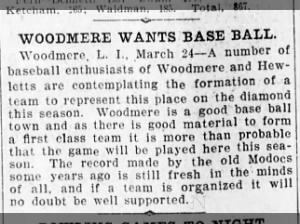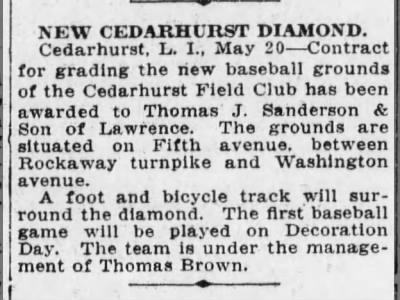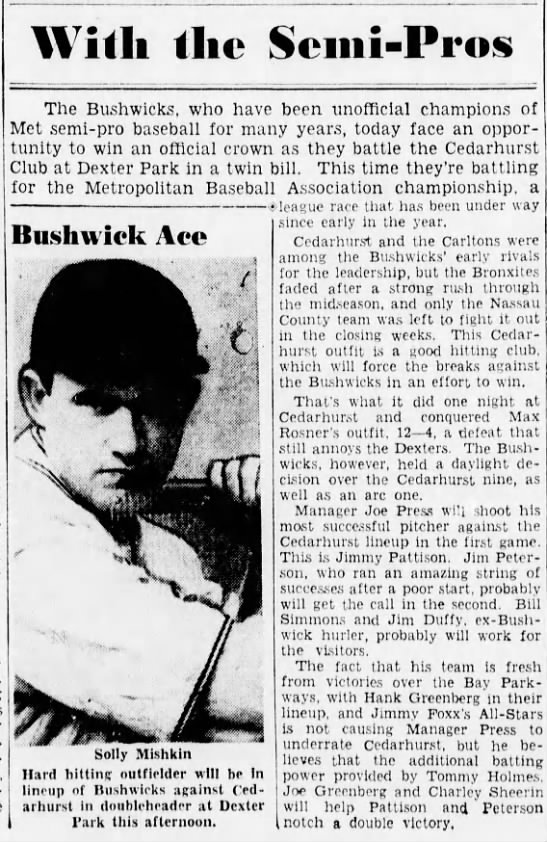Veterans Day originated as “Armistice Day” on Nov. 11, 1919, the first anniversary of the end of World War I. Congress passed a resolution in 1926 for an annual observance, and Nov. 11 became a national holiday beginning in 1938. Veterans Day is not to be confused with Memorial Day–a common misunderstanding, according to the U.S. Department of Veterans Affairs. Memorial Day (the fourth Monday in May) honors American service members who died in service to their country or as a result of injuries incurred during battle, while Veterans Day pays tribute to all American veterans–living or dead–but especially gives thanks to living veterans who served their country honorably during war or peacetime. -- History Channel web site
The ceremonies held at Andrew Parise Park on Veteran's Day 2015 evoked the memory another ceremony at the park (then Cedarhurst Park) in November of 1923. Then, the newly formed Lawrence-Cedarhurst American Legion Post 339 erected a memorial to nine local veterans of World War I who had died in service. They found themselves at the center of controversy the local Ku Klux Klan attempted to lay a wreath at the Thanksgiving dedication ceremony.
 |
| New York Times, Nov. 30, 1923, p. 1 |
As the attached articles recount, the ceremony was about to begin when three members of the Klan - who did not wear their traditional robes or hoods on this occasion -- brought a wreath to the ceremony and desired to place it on the memorial. The family of Lawrence Wood, one of the deceased servicemen, wanted the Klansmen to place their wreath. The Legionnaires opposed them and the situation deteriorated, with fist fights breaking out. The agitated crowd of about 1500 was eventually calmed by the efforts of Col. Wickersham, the Legion post commander and by Rabbi Isaac Landman's impassioned speech in which he stated that the men that they honored that day did not die so "that America should be torn by racial hatred and religious conflict."
New York Times, 11/30/1923, p. 3). The situation did not resolve itself until the police came and the Klan members retreated.

In researching this story, this author found that, as the participants feared, the ceremony overshadowed the reason for the memorial -- the nine young men who made the ultimate sacrifice in the service of their country. It seems appropriate, almost one hundred years later, to offer the names and stories of the men honored on the granite monument in Parise Park.
SGT. Harry P. Bruhn lived at "Fair Oaks" on Pacific Avenue in Cedarhurst
Born on April 6, 1895, the son of a Danish immigrant carpenter, Sgt. Bruhn was a machine gunner with the 7th New York Infantry. He died September 24, 1918 of wounds received in action and is buried at
Saint Mihiel American Cemetery and Memorial in France. (Obituary: The Sun, October 18, 1918, p. 12.)
CPL. John R. Lantry , Jr. lived on Washington Avenue in Cedarhurst.
He was born July 30, 1891, and when he went into the Army he was 5'6" of a medium build with blue eyes and black hair. John Lantry was single and worked with his father as a mason before he went into the Army. He served in the 305th Infantry, Company M and died of lobar pneumonia on December 30, 1917 at Camp Upton, before ever seeing combat. He is buried in St. Mary's Star of the Sea Cemetery in Lawrence.
2nd LT. John Edward Mitchell lived on Pearsall Avenue in Cedarhurst.
He was born October 6, 1895 and on his draft registration, he is described as tall and slender with blue eyes and light hair. Before the war he was single and worked as a clerk for Hard and Rand in New York City. He served in the 23rd Infantry, Company F and died of disease on his birthday in 1918 at the age of 23. Lt. Mitchell is buried in
Meuse-Argonne American Cemetery and Memorial in France.
1st LT. Gordon L. Rand was born on September 3, 1892, the youngest of six children.

He graduated from Yale University in 1912 and went into business with his father's coffee-importing firm, Hard and Rand. He enlisted in the Army in 1915 and served with the Cavalry on the Mexican Border in 1916. When his unit was recalled in 1917, Rand enlisted in the American Ambulance Corps. He was wounded the chest and side from artillery fire and was discharged because of his wounds. He was awarded the Croix de Guerre by the French government for penetrating a zone of fire to deliver medical supplies to men who desperately needed them. Although he was himself wounded, he completed the task and helped evacuate the men before seeking treatment. When he recovered, he enlisted in the Aviation Section of the Air Service Signal Corps, a precursor of the U.S. Air Force. Lt. Rand died from wounds received in action on February 5, 1918. There is a headstone memorial at Trinity-St. John's Church in Hewlett, but Lt. Rand is buried at the
Oise-Aisne American Cemetery and Memorial. An
article in the
Buffalo Evening Courier chronicles an event witnessed by Rand while he was in his plane and his efforts to create a memorial for the French soldiers lost in that skirmish.
 1st LT Philip Newbold Rhinelander was in Harvard University's Class of 1918 when the war broke out.
1st LT Philip Newbold Rhinelander was in Harvard University's Class of 1918 when the war broke out. Born in 1895, he came from a patrician family and was educated at preparatory schools in Newport, RI and California. Philip Rhinelander left Harvard to join the American Field Service in July 1916 and in 1917 enlisted as an aviator. Attached to the 20th Day Bombing Squadron. Lt. Rhinelander was shot down during aerial combat over France, falling to his death on September 26, 1918 at Murville, over the German lines. He is buried at
Murville, Meurthe-et-Moselle in France. There is an extensive and personal tribute to Philip Rhinelander at findagrave.com
Because James Laurence Scanlan had red hair, his nickname was "Red".

Born August 10, 1892, his enlistment application of September 1918 lists his hair color, blue eyes, medium build and his mother's name and his address: Cedarhurst Avenue in Cedarhurst. At the time of enlistment he was working for the Remington Arms Company in Hoboken, NJ. This information omitted the fact that was already a war hero. He had joined the French Foreign Legion in 1914. A battle-related leg injury in 1915 ended his infantry career and left him with one leg shorter than the other. After a lengthy recovery, he registered for the
Lafayette Escadrille (an all-American squadron fighting the Germans during the time before America officially entered the war). "Red" Scanlan had a colorful career in the
Lafayette Escadrille, resulting in several dramatic crashes, before he retired in 1917. The movies
Flyboys (2006) and
The Lafayette Escadrille (1958) portray some of the exploits of these American heroes. Although Scanlan later registered for the draft in the U.S., his war wounds continued to plague him and he died at St. Joseph's Hospital in Far Rockaway on November 25, 1921 at the age of 28. (
Brooklyn Daily Eagle, 11/29/1921, p. 26.) He is buried in St. Mary's Star of the Sea Cemetery in Lawrence.
PFC. John J. Sullivan was from Cedarhurst.
He served in Company C of the 106th Infantry. He died of wounds November 17, 1918.
 PVT. Ralph B. Watts served with Company B of the 102nd Infantry.
PVT. Ralph B. Watts served with Company B of the 102nd Infantry. He enlisted at Hartford, Connecticut in 1916 and during the summer of that year, served on the Mexican border. Deployed to France, he died April 1, 1918 and is buried at
Saint Mihiel American Cemetery and Memorial in France. (The Daily Long Island Farmer, April 12, 1918, p. 1)
Apprentice Seaman (US Navy) Lawrence Lockharte Wood was born in January 1896 and lived at the corner of Oak and Center Streets in Cedarhurst. He enlisted in the Navy in 1916 and d
ied of pneumonia while at the Naval Training School at Newport, RI on, June 6, 1917. Lawrence Wood was the first young man from the Rockaways to die in service in World War I (South Side Observer, March 1,1918, p. 1)
In addition to the nine men listed on the memorial, the
World War I Roll of Honor: Nassau County, New York June 1, 1922
also lists the following servicemen from the Branch communities who were lost in World
War I, the war to end all wars:
- Artuse, Bruno Mott St., Inwood, L. I. N. Y. Pvt., Co. I., 28th Inf. Died of wounds, November 13, 1918
Batta, Alfred M. Henry St. Lawrence, N. Y. Pvt., 1st cl., Co. I., 308th Inf. Killed in action, October 6, 1918
Carmen, Timothy E. Woodmere, N. Y. Sgt., Co. G., 306th Inf. Died of wounds, September 3, 1918
De Mott, Thomas S. West Broadway, Woodmere, N. Y. Pvt., 1st cl., Btry. C., 311th F. A. Died of broncho pneumonia, February 28, 1919
De Ponso, Lidovico Lawrence Ave., Lawrence, N. Y. Pvt., Btry., F. 301st F. A. Died of broncho pneumonia, October 14, 1918
Desimore, Generino Henry St., Inwood, N. Y. Pvt., Co. B., 305th Inf. Died of wounds, September 27, 1918
Dramis, Theodore Henry St., Lawrence, N. Y. Pvt., 1st cl., Co. M., 113th Inf. Died of wounds, October 11, 1918
Harigel, John Lawrence, L. I., N. Y. Pvt., Co. C., 83rd, Inf. Died of influenza, October 14, 1918
Hirsch, Ike Lawrence, N. Y. Pvt., Co. F., 325th Inf. Died of pneumonia, October 9, 1918
Kalley, Nelson Jeannette Ave., Inwood, L. I., N. Y. Pvt., 1st cl., Co. C. 106th Inf. Killed in action, September 27, 1918
- McGinn, Frank J. 52 Red Wood Ave., Inwood, L. I., N. Y. Pvt., Hdqrs. Co. 57th Arty. Killed in action, October 31, 1918
-
Monaghan, Edward Ocean Ave., Lawrence, N. Y. Pvt., 1st cl., Co. M., 113th Inf. Killed in action, October 10, 1918
- Sullivan, John Central Ave., Lawrence, N. Y. Pvt., Co. M. Ord. Dept., U. S. A. Died of broncho pneumonia, October 19, 1918 (not the same as John J. Sullivan from Cedarhurst)
Listed in Haulsee, et al. Soldiers of the Great War In Three Volumes (Soldiers Record Publishing Association, 1920)
- Hicks, Charles Reeves, Jr. Cedarhurst Died of Disease Sgt. [born November 21, 1890]
Additional Information:
Incident at Cedarhurst Park, November 29, 1923
- Jeff Bessen. "Taking a Stand Against Hatred," LI Herald.com, November 4, 2015.
- "Ku Klux-Legion Clash denounced at Cedarhurst," Brooklyn Daily Eagle, November 30, 1923, p. 2
- "Klan and Legion Clash in Park, The Sun and The Globe, November 30, 1923, p. 12.
- "Legion-Klan fight Stirs Cedarhurst," Brooklyn Standard Union, November 30, 1923, p. 6.
- "Ku Klux and Legion fight at Monument to 9 Heroes of War." (1923, Nov 30). New York Times (requires HWPL library card login)
- "Ku Klux Klan in the 20th Century" New Georgia Encyclopedia
- "The Ku Klus Klan in the 1920s," The American Experience, PBS.org
Veterans' Day and Those Who Served
- History Channel: Veteran's Day facts
- Seymour, James W.D. Memorial Volume of the American Field Service in France: "Friends of France, 1914-1917." (Boston: American Field Service, 1921.)
- Kincaid, J. Leslie (comp.) Roll of Honor: Citizens of the State of New York who died in the service of the United States during the World War. (Albany, NY : J.B. Lyon, 1922.)
- Haulsee, et al. (comp.) Soldiers of the Great War, vol. 1 New York. (Washington, DC : Soldiers Record Publishing Co., 1920.) (Larchmont Historical Society web site)
- Harrison, Robert L. Long Island flyboys: the Lafayette Escadrille (Oyster Bay Historical Society).
































